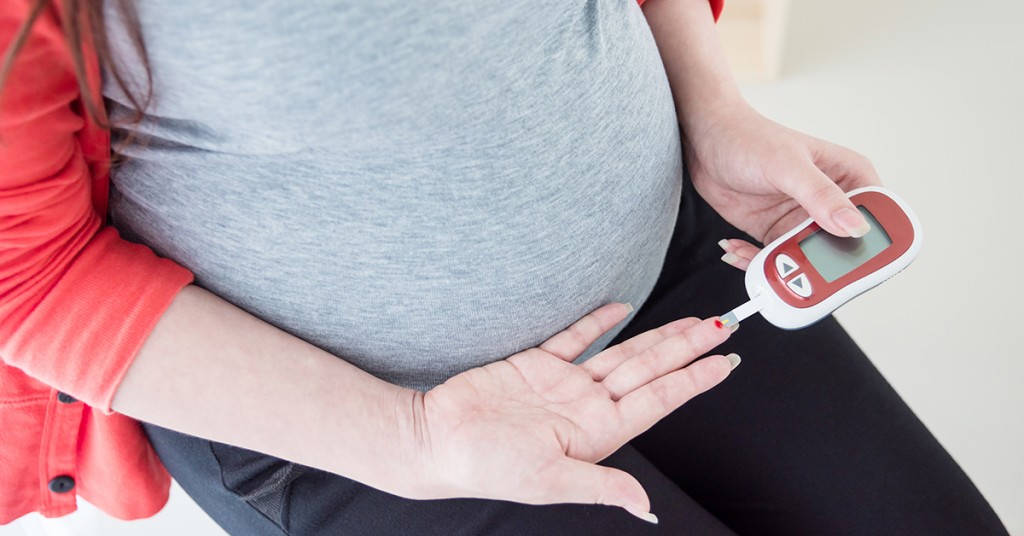Diabetes is a condition that affects about one in ten Americans. That’s more than 30 million people living with diabetes. It is also fairly common for women who did not have diabetes before they were pregnant to develop diabetes while they’re carrying a baby. November is American Diabetes Month, which is a great chance to raise awareness about all types of the disease, including gestational diabetes mellitus (sometimes abbreviated as GDM). So, let’s look at some facts you should know about gestational diabetes.
1. It isn’t Uncommon
Different estimates indicate that between 2-10% of pregnancies in the U.S. are affected by gestational diabetes every year. Diabetes is only considered to be gestational if the mother did not have either type of diabetes before pregnancy. Mothers who already diabetic should discuss possible risks and complications with their doctor as well.
2. The Exact Cause is Unknown
Doctors know how gestational diabetes happens, but they can’t definitively pinpoint why it happens. GDM develops when the body does not produce enough insulin during pregnancy. Insulin is a hormone that regulates how your body uses blood sugar from the foods you eat for energy.
Some pregnant women become insulin resistant because their body’s cells don’t use the insulin it produces efficiently. That means more insulin is required for normal function. Why this happens to pregnant women has not been proven, but it likely relates to hormonal changes that take place as the fetus develops and grows.
3. You Should Keep Getting Your Blood Sugar Checked After You Give Birth
Gestational diabetes usually goes away after childbirth, but the risk of developing type 2 diabetes later is higher. You should get your blood sugar tested 6 to 12 weeks after you give birth and then every 1 to 3 years afterward. You can lower your risk by achieving and maintaining healthy body weight after the baby is born.
4. Gestational Diabetes Can Lead to Complications for Both Mother and Baby
There are several possible complications of GDM that can affect both the mother and the baby:
- The chances of the baby being very large (more than 9 pounds) increase. This can make delivery more difficult and increase your chances of needing a c-section.
- Early birth is more likely, which can cause breathing issues and other complications
- The baby can have low blood sugar after birth
- The baby has a higher chance of developing type 2 diabetes later in life
- Mothers with GDM are more likely to develop high blood pressure or even preeclampsia
- The mother’s chances of developing type 2 diabetes after having the gestational type of the disease increase as well
5. There are Steps You Can Take to Try and Prevent GDM
Before you get pregnant, you can do certain things to lower your chances of developing this condition. If you are overweight, losing weight before you are pregnant is recommended. You shouldn’t try to lose weight while pregnant, so doing it before you try to get pregnant is important. Maintaining a healthy lifestyle with a balanced diet and plenty of physical activity can also lower your risk. While there is no guarantee that these steps will prevent you from developing gestational diabetes, it is worth taking action to give yourself the best chance of avoiding it.
6. Certain People are at a Higher Risk For Developing the Condition
All pregnant women can develop gestational diabetes, but certain factors can increase a woman’s risk of developing the condition. These factors include:
- Being overweight or obese
- Having GDM in previous pregnancies
- Being over 25 years old
- Delivering a baby over 9 pounds in the past
- Having polycystic ovarian syndrome (PCOS)
- Having a family history of type 2 diabetes
- Being part of certain ethnic groups, including African American, Native Hawaiian, Pacific Islander, American Indian, Latino/Hispanic, or Alaska Native
7. When You Get Tested May Depend on Your Risk
Most women are tested for gestational diabetes between the 24th and 28th weeks of their pregnancy, which is when it usually develops. Women who are at a higher risk of developing GDM may have their blood sugar tested earlier on. However, higher than normal blood sugar in early pregnancy may be an indicator of either type 1 or type 2 diabetes unrelated to the pregnancy.
8. There are Several Effective Ways to Manage It
There is no “cure” for gestational diabetes. The condition does not resolve until after the baby is born. However, you can manage it effectively by making certain lifestyle changes. Diet becomes very important when managing any kind of diabetes, including the gestational variety. Work with your doctor and a dietician to determine which foods are best to eat as well as how much you should eat and how often.
Engaging in regular physical activity can also help your body be more responsive to insulin, which can lower blood sugar. Exercise should be moderately intense and you should ask your doctor about which types of exercise are safe and what to avoid.
Avoid gaining too much weight during pregnancy by using these methods as well. Most pregnant women do need to gain weight for the baby to be healthy, but it should not be excessive. Talk to your doctor about how much weight is healthy for you to gain.
Make an Appointment
At Green Valley OB/GYN, we have decades of experience managing both high and low-risk pregnancies. You can be confident that we can provide the best treatment possible if you develop gestational diabetes or have other complications. To make an appointment, call us at (336) 378-1110, or you can request an appointment online if you’re an existing patient with an account.
